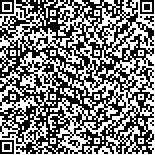| Quote
: |
汤文政, 唐佳瑶, 唐青, 郭啸南, 黄千涵, 林丽莉.捏脊对不同日龄自闭症大鼠海马突触相关蛋白表达及神经可塑性的影响[J].湖南中医药大学学报英文版,2024,44(10):1865-1871.[Click to copy
] |
|
| |
|
|
| This paper
:Browser 74times Download 35times |
| 捏脊对不同日龄自闭症大鼠海马突触相关蛋白表达及神经可塑性的影响 |
| 汤文政,唐佳瑶,唐青,郭啸南,黄千涵,林丽莉 |
| (福建中医药大学, 福建 福州 350122;澳门科技大学, 澳门 999078;福建省中医药科学院, 福建 福州 350003) |
| 摘要: |
| 目的 通过观察捏脊对23、37、51日龄自闭症大鼠行为学及海马区脑源性神经营养因子(brain derived neurotrophic factor, BDNF)、酪氨酸激酶受体B(tyrosine kinase receptor B, TrkB)、环磷腺苷效应元件结合蛋白(cyclic AMP response elementbinding protein, CREB)、突触素(synaptophysin, Syn)、突触后致密蛋白-95(postsynaptic density-95, PSD-95) 蛋白表达的影响,探究捏脊对不同发育时期自闭症大鼠神经可塑性的影响。方法 随机选取42只由丙戊酸钠诱导的自闭症模型大鼠,分为模型组、PN23模型组、PN23捏脊组、PN37模型组、PN37捏脊组、PN51模型组和PN51捏脊组,每组6只;另选取6只正常大鼠为空白组。捏脊组在指定时间开始捏脊干预,每日1次,1次21遍,连续干预28 d;空白组和模型组仅模拟抓取和固定。各组大鼠于干预前后进行行为学检测,取材选择海马组织,采用Western blot检测BDNF、TrkB、CREB蛋白表达水平,免疫荧光法检测Syn、PSD-95的平均光密度值。结果 与空白组比较,其余各组大鼠的站立次数减少、理毛次数增多(P<0.05);与空白组比较,模型组海马BDNF、TrkB、CREB蛋白表达量降低(P<0.05,P<0.01);与PN23模型组比较,PN23捏脊组大鼠海马BDNF、TrkB、CREB蛋白表达量升高(P<0.05,P<0.01);与PN37模型组比较,PN37捏脊组大鼠海马BDNF、TrkB、CREB蛋白表达量升高(P<0.05,P<0.01);与空白组相比,模型组Syn、PSD-95的平均光密度均降低(P<0.01);与同日龄的模型组比较,各捏脊组大鼠海马Syn、PSD-95的平均光密度均升高(P<0.01)。结论 捏脊可以改善自闭症大鼠的行为障碍,上调不同日龄自闭症模型大鼠海马BDNF、TrkB、CREB、Syn、PSD-95蛋白表达量,改善突触功能,提高神经可塑性。同时,提示捏脊对发育早期的自闭症模型大鼠治疗效果较好。 |
| 关键词: 捏脊 小儿推拿 自闭症 突触素 神经营养因子 脑功能 |
| DOI:10.3969/j.issn.1674-070X.2024.10.020 |
| Received:June 11, 2024 |
| 基金项目:国家自然科学基金项目(81704194);福建省自然科学基金项目(2022J01366)。 |
|
| Effects of spinal manipulation on the expression of synaptic-related proteins and neuroplasticity in the hippocampus of autistic rats at different ages |
| TANG Wenzheng, TANG Jiayao, TANG Qing, GUO Xiaonan, HUANG Qianhan, LIN Lili |
| (Fujian University of Chinese Medicine, Fuzhou, Fujian 350122, China;Macau University of Science and Technology, Macau SAR 999078, China;Fujian Academy of Chinese Medical Sciences, Fuzhou, Fujian 350003, China) |
| Abstract: |
| Objective To observe the effects of spinal manipulation on the behavior and expression of brain-derived neurotrophic factor (BDNF), tyrosine kinase receptor B (TrkB), cyclic AMP response element binding protein (CREB), synaptophysin (Syn), and postsynaptic dense-95 (PSD-95) in the hippocampus of 23, 37, and 51-day-old autistic rats, and to explore its impact on neuroplasticity in autistic rats at different developmental stages. Methods Forty-two autism model rats induced by sodium valproate were randomly divided into model group, PN23 model group, PN23 spinal manipulation group, PN37 model group, PN37 spinal m anipulation group, PN51 model group, and PN51 spinal m anipulation group, with six rats in each group. Additionally, six normal rats were selected as the blank group. The spinal manipulation group received daily spinal manipulation interventions, 21 repetitions per session, for 28 consecutive days, starting at the specified time points. The blank group and model groups only underwent simulated grasping and fixation. Behavioral tests were conducted on rats in each group before and after the interventions. Hippocampal tissue was selected, and the protein expression levels of BDNF, TrkB, and CREB were checked using Western blot, while the average optical density values of Syn and PSD-95 were measured by immunofluorescence. Results Compared with the blank group, the remaining groups showed a decrease in standing frequency an increase in hair grooming frequency (P<0.05). Compared with the blank group, the protein expression levels of BDNF, TrkB, and CREB in the hippocampus of the model groups decreased (P<0.05, P<0.01). Compared with the PN23 model group, the protein expression levels of BDNF, TrkB, and CREB in the hippocampus of PN23 spinal manipulation group increased (P<0.05, P<0.01). Compared with the PN37 model group, the protein expression levels of BDNF, TrkB, and CREB in the hippocampus of PN37 spinal manipulation group increased (P<0.05, P<0.01). Compared with the blank group, the average optical density of Syn and PSD-95 in the model groups decreased (P<0.01). In comparison with the model groups of the same age, the average optical density of Syn and PSD-95 in the hippocampus of rats in all spinal manipulation groups increased (P<0.01). Conclusion Spinal manipulation can improve behavioral disorders in autistic rats, upregulate the expression of BDNF, TrkB, CREB, Syn, and PSD-95 in the hippocampus of autistic model rats at different ages, enhance synaptic function, and improve neuroplasticity. Furthermore, it is suggested that spinal manipulation has a better therapeutic effect on autistic model rats in the early stages of development. |
| Key words: spinal manipulation pediatric massage autism spectrum disorders synaptophysin neurotrophic factors brain function |
|

二维码(扫一下试试看!) |
|
|
|
|


